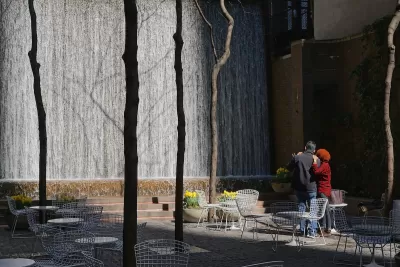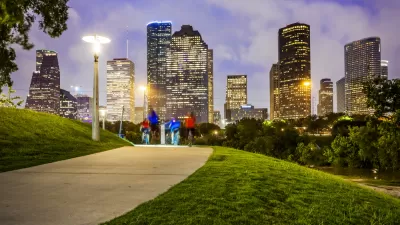Pocket parks aren’t the only way to repurpose underused urban spaces.

When a building roof collapses, whether from age and neglect, a natural disaster, or other causes, buildings and lots often sit vacant and underused for years.
In a piece for Strong Towns, Becky McCray highlights various ways that cities and groups can repurpose roofless buildings.
Most commonly, cities install pocket parks in these locations, but McCray points out that these often go underused. “Try cheap and temporary setups to see what people in your town will actually use. This is important because I’ve seen a lot of pocket parks in small towns, but I’ve very, very, very rarely seen a person actually using one, and I’ve never seen a group or a crowd enjoying a pocket park.”
McCray’s suggestions include adding ample seating and picnic tables to parklets to encourage family and group outings and making the space more inviting with amenities such as public restrooms, games, and art.
For McCray, the key to activating vacant spaces is providing comfort, amenities, activities — or ideally a combination of the above that encourages people to come, stay, and interact.
Vacant lots can bring in revenue, too: “Rent the space to a nearby eatery for outdoor seating during the nice-weather season,” McCray suggests, or offer it for use by farmers’ markets, artisans, and special events.
FULL STORY: 19 Things You Can Do With a Roofless Building or an Empty Lot

Alabama: Trump Terminates Settlements for Black Communities Harmed By Raw Sewage
Trump deemed the landmark civil rights agreement “illegal DEI and environmental justice policy.”

Planetizen Federal Action Tracker
A weekly monitor of how Trump’s orders and actions are impacting planners and planning in America.

The 120 Year Old Tiny Home Villages That Sheltered San Francisco’s Earthquake Refugees
More than a century ago, San Francisco mobilized to house thousands of residents displaced by the 1906 earthquake. Could their strategy offer a model for the present?

In Both Crashes and Crime, Public Transportation is Far Safer than Driving
Contrary to popular assumptions, public transportation has far lower crash and crime rates than automobile travel. For safer communities, improve and encourage transit travel.

Report: Zoning Reforms Should Complement Nashville’s Ambitious Transit Plan
Without reform, restrictive zoning codes will limit the impact of the city’s planned transit expansion and could exclude some of the residents who depend on transit the most.

Judge Orders Release of Frozen IRA, IIJA Funding
The decision is a victory for environmental groups who charged that freezing funds for critical infrastructure and disaster response programs caused “real and irreparable harm” to communities.
Urban Design for Planners 1: Software Tools
This six-course series explores essential urban design concepts using open source software and equips planners with the tools they need to participate fully in the urban design process.
Planning for Universal Design
Learn the tools for implementing Universal Design in planning regulations.
Clanton & Associates, Inc.
Jessamine County Fiscal Court
Institute for Housing and Urban Development Studies (IHS)
City of Grandview
Harvard GSD Executive Education
Toledo-Lucas County Plan Commissions
Salt Lake City
NYU Wagner Graduate School of Public Service





























